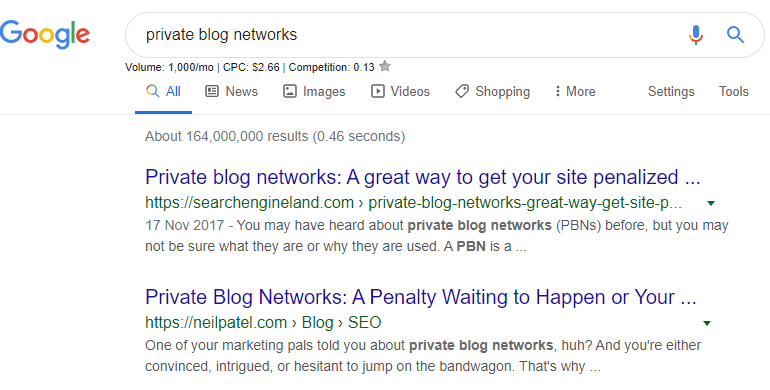All Categories
Featured
Table of Contents
- – Top Semantic Seo Optimization Tools Showroom N...
- – What Is The Top Semantic Seo Optimization Tool...
- – Who Offers The Most Reliable Semantic Markup ...
- – What Is The Most Affordable Semantic Seo Audi...
- – Who Is The Most Reliable Semantic Seo Insigh...
- – How To Buy The Top Advanced Semantic Seo
- – The Leading What Is Semantic Seo Service?
The internet is altering, coming to be a lot more and extra semantic. SEO is likewise changing and coming to be extra semantic. This is because online search engine have actually developed and are moving more and a lot more towards reading content on the web. Obviously, that has actually additionally altered the way we develop web content, specifically if we want to rate much better in the search engines.
Intertwingularity is not normally recognized, individuals keep acting they can make things deeply hierarchical, categorizable and sequential when they can not. Based on the connections between search intents, the search engine likes a material in placing by determining the range in between the vectors of definition.
It permits you to see, beginning with a topic, all the entities that relate to that subject. This means you can clearly see which entities/concepts/ideas have currently been covered on your site, and you can discover new possibilities by understanding what material you can add and how to develop it.
Top Semantic Seo Optimization Tools Showroom Near Me
It is able to make your content reasonable for search engines on the one hand and for your target market on the other. Structuring your web content version highlights your material and its underlying relationships to make sure that online search engine can identify you among numerous items of information, making you much more noticeable to customers who meet the search intent associated to your service.
In semantic search engine optimization copywriting, an editor begins with a broader series of topics and customizes the web content to consist of semantically relevant terms and expressions that assist viewers recognize a topic, comparable to checking out material in a wiki. From a content composing viewpoint, one practical means to do this is to produce a vocabulary of terms and inquiries bordering your target topic.
What Is The Top Semantic Seo Optimization Tools Service?
Discover more regarding by viewing the by!.

Semantic search describes the procedure of how online search engine comprehend and match key phrases to a searcher's intent in natural search results. Before semantic search, search engines like Google ran like matchmakersaligning specific words in your question with those specific words on pages. The results were straightforward yet often lacked deepness.
Who Offers The Most Reliable Semantic Markup In Seo Services
It makes it possible for Google to supply quick, accurate responses to search questions regarding real-world topics. When you kind a query word into Google, you're not simply entering a sequence of words.
When you search for "Apple," Google does not simply see a word that explains a fruit. It acknowledges Apple as a business and can supply related info. It was Google's response to the surge of voice searches, where queries became extra conversational and nuanced.
What Is The Most Affordable Semantic Seo Audits Deal
By integrating NLP, Hummingbird permitted Google to move past mere keyword matching. It helped the search engine comprehend search intent, raising the chances that results would properly match the factor behind a user's search.
Making it more reliable at managing never-before-seen search inquiries. RankBrain thinks about even more than simply keyword phrases when assessing a search question.
So it brings outcomes that match the keyword phrases and line up with the general intent of providing young puppy training advice. And if the customer frequently looks for dog-related material, Google might focus on extra comprehensive training guidesrecognizing the individual's continuous rate of interest in the topic. Combining modern technologies like the Understanding Chart, Hummingbird, and RankBrain, semantic search aids the Google formula translate and link data throughout a substantial internet of info.
Who Is The Most Reliable Semantic Seo Insights Service
The focus shifts from keyword choice to an alternative technique including individual intent, topical importance, and general individual experience. Producing content that addresses the searcher's needs with comprehensive info can boost your SERP rankings. Below, we detail the trends and methods that consolidate the demand for semantically notified material. Later on, we offer actionable tips to transform these insights into finest techniques.
A broader technique to material aligns much better with semantic search's shift away from precise key words matching and toward user intent. Web content that covers search queries more extensively not just satisfies users.
UX intends to produce a visually attractive, user-friendly user interface with engaging, quality material that motivates site visitors to remain. Semantic search modern technology enables search engines to intend for outcomes that give the ideal feasible UX.
How To Buy The Top Advanced Semantic Seo

All display Google's ability to attend to a topic inquiry adequately. By understanding the context and intent behind individual questions, online search engine can deliver much more relevant details and possibly raise individual engagement. Personalization in search engine result makes for better UX.Based on your previous search history and choices as a customer, semantic search assists browse engines customize the results to match your unique demands and rate of interests.
So it brings results that match the key words and align with the overall intent of giving pup training guidance. And if the customer often searches for dog-related content, Google may prioritize more detailed training guidesrecognizing the user's recurring interest in the topic. Incorporating technologies like the Understanding Chart, Hummingbird, and RankBrain, semantic search aids the Google algorithm translate and connect data across a huge web of info.
The Leading What Is Semantic Seo Service?
The focus changes from keyword selection to an all natural technique encompassing individual intent, topical importance, and overall customer experience. Developing material that attends to the searcher's demands with extensive information can improve your SERP positions. Below, we detail the patterns and techniques that settle the need for semantically notified content. Later on, we offer actionable pointers to turn these insights right into finest methods.

A broader strategy to material aligns better with semantic search's change away from precise search phrase matching and toward user intent. Web content that covers search queries much more extensively not just satisfies users.
And five times greater than websites that take 10 secs to lots. While technical SEO makes sure optimum site performance and accessibility, concentrating on user experience (UX) takes it a step better. UX aims to produce an aesthetically appealing, easy to use user interface with engaging, top quality web content that motivates site visitors to remain. Semantic search technology enables internet search engine to aim for outcomes that provide the very best feasible UX.
All display Google's ability to address a subject query adequately. By understanding the context and intent behind user questions, online search engine can supply extra pertinent information and possibly raise individual interaction. Personalization in search results page produces much better UX.Based on your previous search background and preferences as an individual, semantic search helps online search engine tailor the outcomes to match your one-of-a-kind demands and interests.
Table of Contents
- – Top Semantic Seo Optimization Tools Showroom N...
- – What Is The Top Semantic Seo Optimization Tool...
- – Who Offers The Most Reliable Semantic Markup ...
- – What Is The Most Affordable Semantic Seo Audi...
- – Who Is The Most Reliable Semantic Seo Insigh...
- – How To Buy The Top Advanced Semantic Seo
- – The Leading What Is Semantic Seo Service?
Latest Posts
Top Semantic Keywords Deals Near Me
Top Semantic Search Engine Optimization Sales Near Me
How Is The Most Reputable Seo For Semantic Search Company
More
Latest Posts
Top Semantic Keywords Deals Near Me
Top Semantic Search Engine Optimization Sales Near Me
How Is The Most Reputable Seo For Semantic Search Company